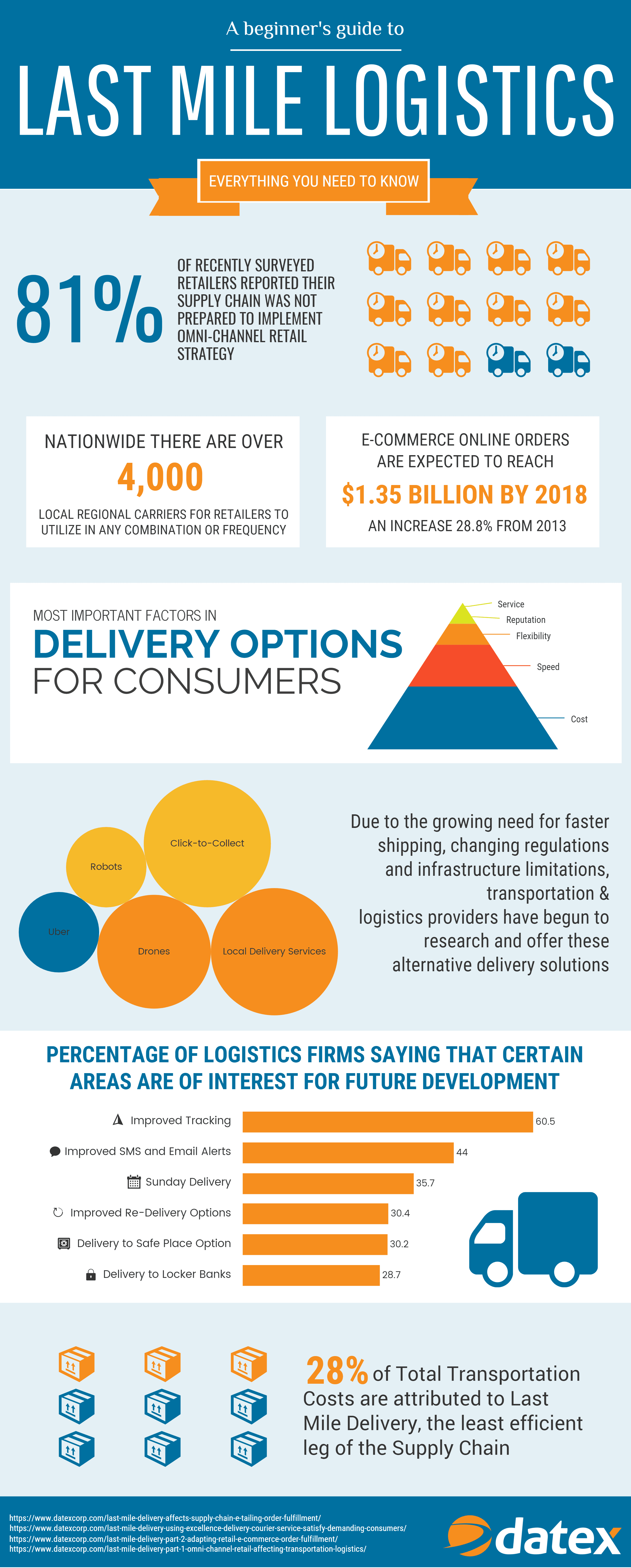Last mile delivery is defined as the movement of goods from a transportation hub to the final delivery destination and the final destination is usually a residence. 81 percent of recently surveyed retailers have reported that their supply chain is not prepared to implement an omni-channel retail strategy. This is an issue because e-commerce online orders are expected to reach $1.35 billion by 2018. This is a 30% increase from 2013. Nationwide there are over 4,000 local regional carriers for retailers to utilize in any combination or frequency. Some of the most important factors for consumers when considering delivery options include: Cost, speed, flexibility, reputation, and service. Due to the growing need for faster shipping, changing regulations and infrastructure limitations, transportation and logistics providers have begun to research and offer alternative delivery solutions. These alternative delivery solutions include, click-to-collect, robots, Uber, drones, and local delivery services. Logistics firms have recognize the following as areas of interest for future development: Improved tracking, improved alerts, Sunday deliveries, improved re-delivery options, delivery to safe place options, and delivery to locker banks. 28 percent of total transportation costs are attributed to last mile delivery, the least efficient leg of the supply chain. To learn more about last mile delivery and omni-channel retailing contact Datex experts today at marketing@datexcorp.com or www.datexcorp.com .

